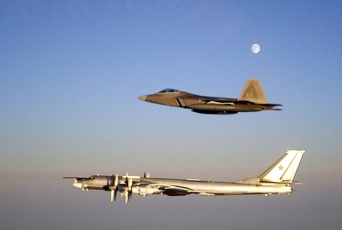Wink of a Cold War
Although experts and activists alike have been saying this for many years, it has taken until 2009 for the U.S. Department of Energy to admit that the era of cheap oil is over. And there are yet more shocks in store for certain hubristic nations:
The IEO report hints at other geopolitical changes occurring in the global energy landscape, especially an expected stunning increase in the share of the global energy supply consumed in Asia and a corresponding decline by the United States, Japan, and other "First World" powers. In 1990, the developing nations of Asia and the Middle East accounted for only 17% of world energy consumption; by 2030, that number, the report suggests, should reach 41%, matching that of the major First World powers.
All recent editions of the report have predicted that China would eventually overtake the United States as number one energy consumer. What's notable is how quickly the 2009 edition expects that to happen. The 2006 report had China assuming the leadership position in a 2026-2030 timeframe; in 2007, it was 2021-2024; in 2008, it was 2016-2020. This year, the EIA is projecting that China will overtake the United States between 2010 and 2014.

For Banksy, the elephant in the room is global poverty.
Clearly, there have been generations of so called ‘experts’ writing reports that assume a much more predictable and stable future than what is actually the reality. With a managerially crippled mentality, they have spent the greater years of the 20th Century writing little more than what their masters want to hear.
As the U.S. economy slides into uncertainty, it’s hard to miss the unmistakable presence of a certain engorged elephant holding down the floor. Despite a downturn in Defense spending, the U.S. military takes a long wave view, and the ripples and shocks of previous excesses are still in effect. Rapacious military-industrial corporations spawning projects like the F-22 Raptor are quite literally preying on taxpayers, with questionable benefits:
At the end of the day, perhaps the most important question remains – why are we continuing to fund a Cold War-era weapon that was designed to counter the next-generation Soviet fighters that were never constructed?
Certain groups are simply unwilling to put down their weapons. Addicted beyond all possible hope of ceasing their gluttonous orgy of tax dollars, they refuse to concede in the face of awareness that the finite result of their zero-sum game will be the total destruction of life on this planet as we have known it.
It has become fashionable to talk about ‘post-nationalism’ and pretend that the era of mutually assured destruction is over, but truth be told, as long as these machines still patrol the skies, the world is still at war.
What’s less often pointed out is that these war machines are not merely a pragmatic means of securing the oil supply, they are in fact the primary consumers of oil — apex predators at the very pinnacle of the petroleum pyramid.

In 2007, Russia resumed Cold War style long range nuclear bomber patrols. Here, in November 2007, an American F22 Raptor intercepts a Russian Tu-95 Bear near Alaska.